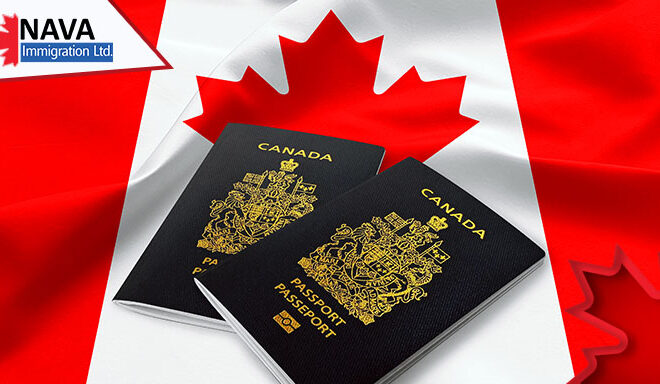Demand for trade workers in the Canadian labor market.
Canadian immigration department, IRCC- Immigration, Refugees and Citizenship Canada has selected six categories to consider in its Express Entry category-based draws this year. Trades is one of those categories.
The new category-based selection draws were launched earlier this year in May under the Express Entry. The Federal Government in Canada introduced these draws under its immigration strategy in order to fill the labor market gaps in five distinct occupation-based categories.
For 2023, the occupational categories under Express Entry are as follows:
- Trades
- Healthcare
- Transport
- Agriculture/Agri-food
- Science, Technology, Engineering and Mathematics (STEM)
IRCC established the Express Entry category-based draws to assist important employment sectors in Canada that have urgent labor market needs.
IRCC conducted the first category-based draw under the Express Entry on June 28. Since then, as of now, the department has held four more category-based draws for occupational categories.
The newly introduced category-based draws differ from the standard Express Entry draws, based on the importance placed on the candidate’s Comprehensive Ranking System (CRS) scores. The standard EE draws primarily emphasize the Candidate’s CRS score while ranking, whereas the category-based draws emphasize the work experience in a specific field.
Reasons for including Trades in Express Entry Category draws.
Candidates with skilled trades are in high demand, which is both fulfilling and vital for communities across Canada, as per the Employment and Social Development Canada (ESDC).
The ESDC further estimates that around 256,000 new skilled trade workers would be needed over the coming five years in order to address the demand for trade workers throughout the country.
Furthermore, as per a new report of August 2023 released by the Canadian Government, the Canadian Apprenticeship Forum anticipates that between 2022 and 2026, there will be a need for more than 122,000 new journeypersons to maintain workforce certifications for Red Seal trades in Canada.
The Res Seal in Canada is a program that is used to create standards and examinations for Red Seal trades.
If skilled trade workers pass the Red Seal Test, they are provided with a Red Seal approval, which proves that they have reached the national standard in their trade.
Overall, these estimations reflect the demand for trade workers in Canada, and it is also clear why the Government of Canada has included trade occupations in the new categories of the Express entry category-based draws this year.
The actual demand for trade workers in Canada.
In addition to the trade demand predictions in Canada by the ESDC and the Canadian Apprenticeship Forum stated above, a prediction by BuildForce Canada says that around 299,200 new skilled workers are needed by 2023 in the Canadian Construction sector. This prediction resulted from the fact that about 20% of the workers in the 2022 labor force in the construction field, which is approximately 245,100 workers, are likely to retire shortly.
Employment and Social Development Canada (ESDC) uses an online estimation tool called the Canadian Occupational Projection System (COPS). As per the tool, the occupational perspective of the Trade workers shows that between 2022 and 2031, the job vacancies in this field are expected to rise by approximately 20,000.
In particular, the data below defines how four variables including the increasing demand, retirements, replacement opportunities, and emigration, are projected to lead to new job vacancies within the trade occupation over the future years.
- Increasing trade demand will create around 17%, i.e., 3,400 job vacancies
- Retirements in trades will create around 60%, i.e., 11,800 job vacancies
- Other Replacement demand in trades will create around 9%, i.e., 1,800 job vacancies
- Emigration in trades will create around 13%, i.e., 2,600 job vacancies
These numbers indicate that there will be a high demand for trade workers in Canada. Within the coming years, the country will need additional workers in skilled craft professions to address the labor shortages in the trade sector.
How is trade demand beneficial for potential immigrants to Canada?
As per the year-end report of Express Entry 2022, the top candidates who received the Invitations to Apply (ITAs) for Canadian permanent residence last year were skilled workers in trade occupations.
Cooks were particularly among the top fifteen professions of Canadian immigrants who obtained ITAs in 2022. This follows a pattern that began in 2021. Notably, in 2021, candidates with cooking experience
were among the top five occupations of immigrants who received the ITAs.
This indicates that the Canadian Government was interested in inviting immigrants to the country with work experience in skilled trades who can help bridge the gaps in the labor market, even before the launch of new category-based draws.
In addition to this, as per last year’s statement of Canada’s Minister of Housing and Diversity and Inclusion, Mr. Ahmed Hussen, who served until July 2023, there are abundant work possibilities for candidates who have work experience in trade occupations and desire to immigrate to Canada.
He added that in order to address Canada’s housing crises, there is a need for skilled immigrants in the country. Increased skilled immigrants can aid in building the trade and construction sector in the country and contribute to the nation’s economy. The minister further stated that more talented workers can also help in constructing the houses that Canadians need to live in.
These instances are enough to understand the demand for trade workers in Canada and that new immigrants with work experience in skilled trades could potentially create significant careers in Canada. Candidates skilled in trade occupations can consider immigrating to Canada under the Express Entry category-based selection draws for Trade workers.
Overview of the EE Category-based draw for Trade occupations
As of now, IRCC has conducted one Express Entry category-based draw for candidates with work experience in trade occupations.
The draw occurred on August 3, 2023, and a total of 1,500 ITAs were issued to eligible candidates in the trade occupations to apply for Canadian permanent residence. The minimum required CRS score for this draw was 388, which candidates needed to receive the invitations.
The Globe and Mail published a report based on IRCC data just before this category-based draw for trade occupations occurred. The report showed that the category-based Express Entry draws for candidates with work experience in the Trades field would account for 3 to 4 % of the total ITAs issued under the Express Entry for the rest of 2023.
IRCC holds draws on a regular basis to attract and invite eligible candidates under the Express Entry category base draws to overcome its labor market shortages and strengthen its economy.





